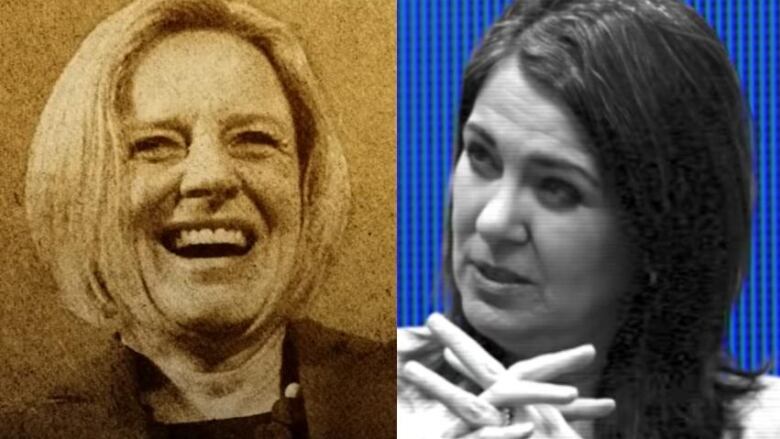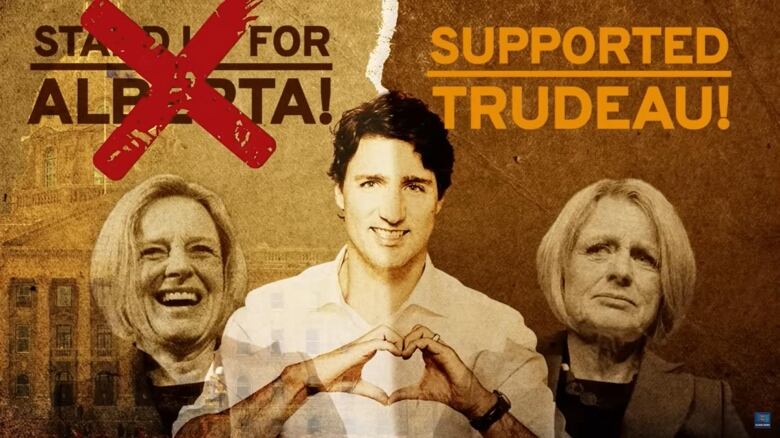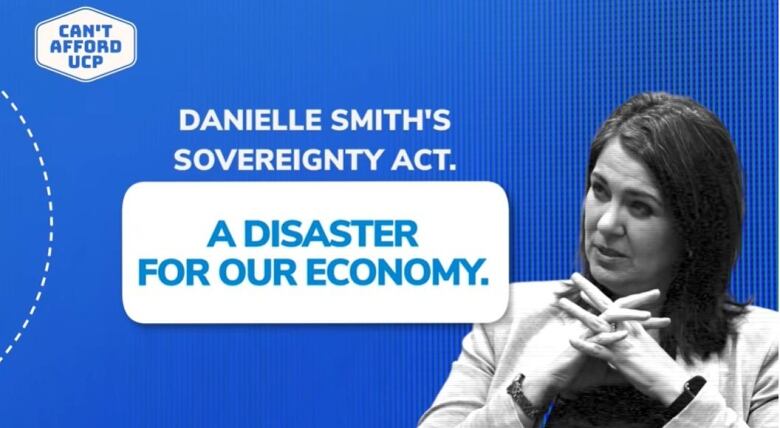Why we fall for political ads especially the nasty ones
UCP and NDP attack ads have been flying in Alberta, as a provincial election looms

If you live in Alberta,you've probably heard an ad waft over the radio telling you United Conservative Party Leader Danielle Smith will make you rack up credit card debt to see a doctor.
Or that NDP Leader Rachel Notley wants to tax you into oblivion.
The run-up to the May 29 provincial election brings reams of political advertisements ranging from shots at rivals to positive messages delivered with plastered on smiles.
There aresimilarities: A story. A hero. A villain. A call to action.
You may sneer when a vicious attack advertisement comes across the TV or social media feed, but research shows they work especially the nasty ones.
The issue, the contrast, the connection
Political ads are developed using a mix of public opinion research, focus groups, creative teams, political strategy and science. They aren't cheap and both campaigns have a lot of money to spend.
It can be a TV ad, a social media post, a radio spot, a flyer, a billboard, but the goal is the same.
"You're thinking about what the main issue that you're trying to raise the salience of is, how you want to implicitly or explicitly contrast your campaign, your values, your leader with the campaign of your major opponent," saidAdrienne King, a creative specialist with the NOW Group. She crafted ads for the Alberta NDP in 2015.
At worst, theyhavethe staying power of a flimsy lawn sign on a windy day in Medicine Hat. At best, an ad sticks withyou up to voting day.
"What is the heart feeling and what is the mind thinking; the emotive and the cognitive. And if you can find a way to put them both together, that's where you get the most powerful advertising," said Dennis Matthews, a former advertising advisor for then prime minister Stephen Harper and president of Creative Currency.
Ads take different forms (biographies, attacks, policy pitches) though they often have common threads.
"A good ad always has a very particular structure. It starts out like connecting with people directly and it then goes to what should you be worried about and then it goes to a little bit of a solution," said Drew Westen, a professor of psychology and psychiatry at Emory University who has analyzed thousands of campaign ads.
In this Alberta campaign, the parties are attacking each other on issues they know voters care about: health care and the economy.
Emotion versuslogic
The UCP are going after the NDP on taxes, saying they'll make life more expensive. The NDP are returning fire, saying Smith is an unpredictable leader at a time when Alberta needs stability.
Research on political ads shows votersthink of themselves as rational actors, making informed decisions and picking candidates based on the "10 Point Plan to Fix Everything". Spoiler alert: That same research says voters are less logical than they'd like to believe.
"We think that reason and emotion are opposing in politics. That if you make a rational appeal, you're good. If you make an emotional appeal, you're bad," Westen said.
"I've done unconscious testing of attack ads and they're as effective as consultants believe they are."

Humans are emotional creatures and attack ads pluck the strings of intense feelingslike fear. And fear, science tells us, is a powerful motivator.
The more acute the reaction, the more it's likely to stick with you. That's why experts say attack ads work so well.
An analysis of hundreds of ads in abook by well-known American political scientist Ted Brader,Campaigning for Hearts and Minds: How Emotional Appeals in Political Ads Work,found 72 per cent were geared predominantly to emotions not logic.
Another 2005 study found campaign ads that make people feel fear (think intense music, grainy monotone images, bold text, solemn voiceover) tends to drive those voters to search out more information and remember the ad.
Certain visuals can also prompt positive feelings. There's evidence using images of flags or children makes viewers trust candidates, according to the American Psychological Association.
Two studies from 2016 and 2022 show ads reinforce existing support. Viewers had more emotional reactions to ads from candidates they already supported.

Negative ads can backfire
But the negative ones, while powerful, can backfire.
Remember the federal Progressive Conservatives' 1993 ad that poked fun at Liberal Leader Jean Chrtien'sfacial paralysis? (They had to pull the ad and Chrtien won three back-to-back majorities.)
Because both Smith and Notley have their own victories and baggage already, the tactics in the ads may look different in this Alberta election.
"This is a real presidentialized race. Both of these women, they're household names, they're extremely well known," Matthews said.
"Nobody's going to be able to redefine themselves in this campaign. I think that's what really makes this one unique."
Between early February and the end of April, the UCP spent about $158,000 on 58 Facebook ads from their main account,based on estimates from Facebook's ad library. The NDP spent about $88,500 on 121 ads.
Prepare for three more weeks of the parties trading blows over the airwaves and platforms.
"Attend to the emotion that is trying to be evoked and and if it is evoking a strong reaction from you, do some reflection on why that is," King said.
It's advice to voters echoed by Matthews.
"Try to try to ask yourself, why are they sending this message to me. What are they really trying to say here," he said.
"Be a little bit of an analyst yourself when you see this stuff. Don't take anything at face value."
If the ad is the weapon, the hearts and mindsof voters are the target in this particular Battle of Alberta.












_(720p).jpg)


 OFFICIAL HD MUSIC VIDEO.jpg)
.jpg)



























































































